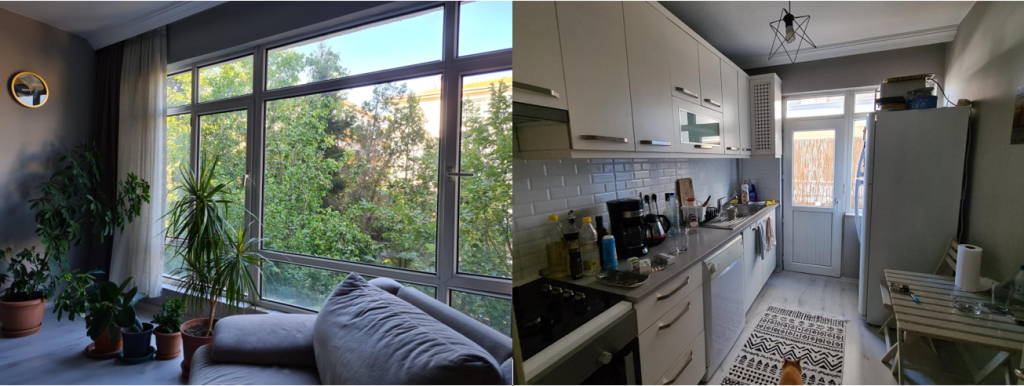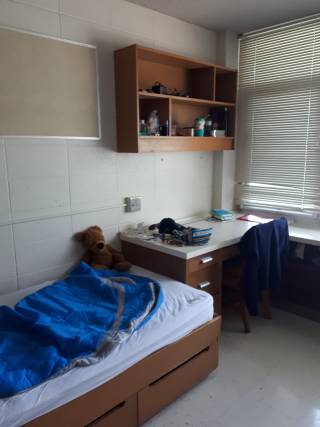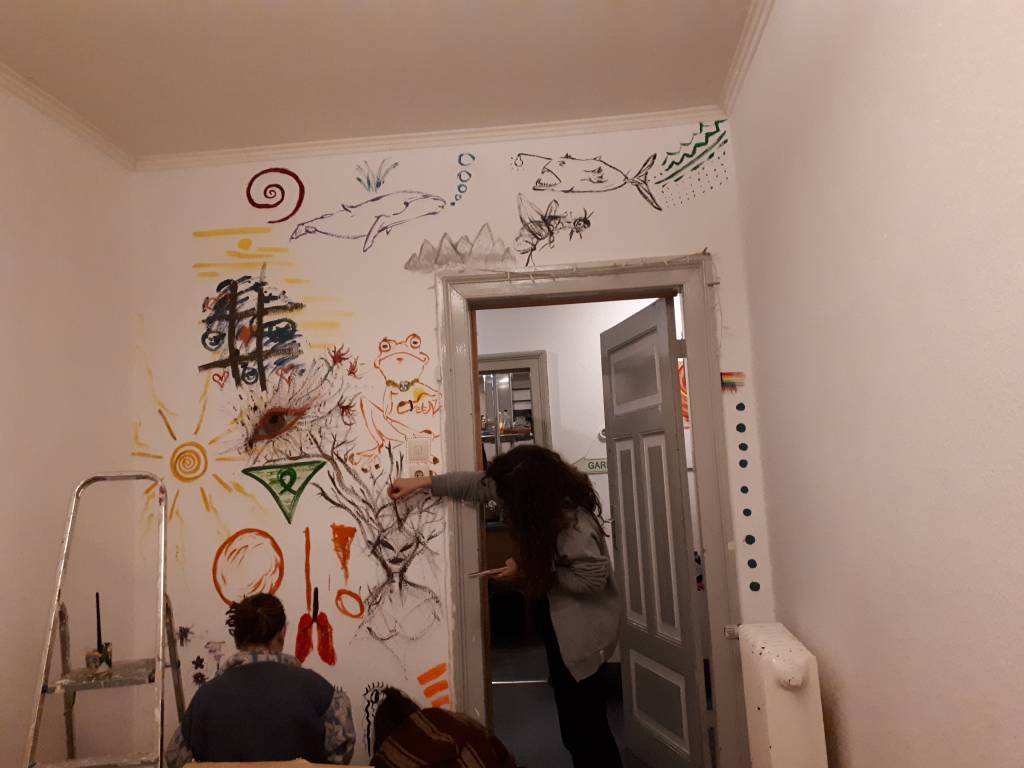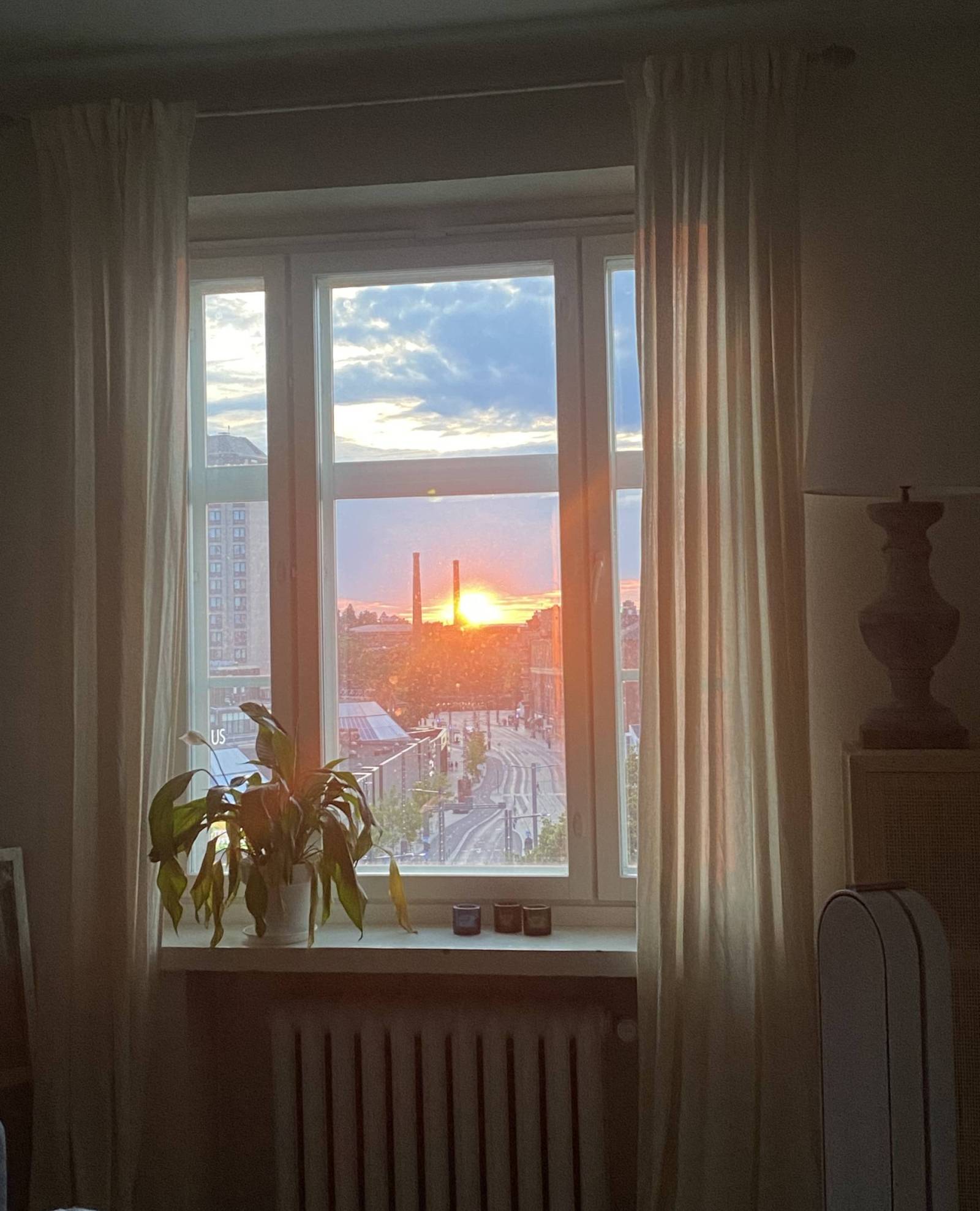We are three students from Tampere University and will be sharing our experiences with living in different locations and ways. From living alone to sharing a single room with two others to living in a seven-person flat, we have had a range of different experiences to help you choose how you might want to live as a student. Besides sharing our experiences with you, we will also let you know some of the benefits and disadvantages of sharing your living space with other people. And, we will give you some tips on how to navigate living together with others.
Jenni – liked living on her own
I’ve had my share in moving from an apartment to another during my studies at Tampere University. It was my first time not living with my parents when I moved here to study architecture. I moved to a TOAS shared apartment where I lived with another girl just a walk away from the University. I had my own room but we shared a kitchen and a bathroom. The move was fast and easy and the cost of living was as low as it could be. I think it was even less than 300€ a month. I’m not big on living with other people but it was quite nice in the end having some shared meals and movie nights.
After the first year I moved to my first apartment where I lived alone. It was a 30 m2 studio two trams away from my University. It was newly built with a view looking over an allotment. This was a bit more expensive than what I was used to but with the student funds I was able to afford it. I sometimes got a bit lonely due to it being the first time living alone but I became independent and felt free in some ways. I also lived alone in a studio in Paris during my Erasmus but the rent was double there. The costs of living alone in Tampere were something I learned not to take for granted.
Afterwards, I’ve lived with a partner in bigger apartments but I do sometimes miss the feeling of my own space while still having the opportunity to socialize with flat mates. Co-living also forces me to participate in activities whereas living alone or with a partner sometimes makes me a bit of a couch potato. I would suggest to try and live in different situations sometimes outside of your comfort zone, so your sense of self and adaptability can grow as much as possible.

Claudia – has shared a room with two people
I have lived alone, with roommates and with a flat mate, and currently I am living with my partner. All of these living situations have had their ups and downs, but I genuinely think everyone should try to share their living space, just to know what it would be like.
During my first Erasmus semester abroad, I lived in a dormitory where I shared one room and bathroom with two other girls, and the kitchen and laundry room with the entire dormitory. This was something I had never thought of doing before, but due to the living costs I ended up in the dormitories. In the end, it was not nearly as bad as I thought it would be and I became quite close with my roommates, even if we had some cultural differences and our own weird habits. For example, one of my roommates would wake up at 3 am to study or pray, and the other one would sleep until late afternoon and never leave the room. They were also not the strongest with their English skills, but surprisingly we still shared nice moments and enjoyed living together. It was also great to live in the same dormitory building with other Erasmus students, cook together in the shared kitchen, and study in the shared study spaces.

In my second semester abroad, during my internship and Erasmus semester, I lived with only one flat mate, which one might think would be easier than sharing one room with two people, but as it turned out it was actually at times a little bit more challenging.
In Tampere, I lived in a two-room apartment for the first four and a half years of my studies. I wanted to live in a bigger place, so my dog would have enough space, but that meant it also cost a little bit more, around 650-700€ per month for a private sector apartment. During spring of 2025, I moved to a new POAS apartment with my partner. Our new place is a three-room apartment, and the rent is around 1000€ per month, which is not cheap but more affordable than paying the old apartment alone. The apartments in the building are meant for students and young working adults.
However, living with a flat mate or a roommate is still in my opinion beneficial for learning to communicate, recognizing your own habits and boundaries as well as tolerating things that are slightly annoying or inconvenient. At best, you can find a new best friend, and even in the worst case you can live a little cheaper while co-existing with another person.
Daphne – has 15 years of experience with shared living
Ever since moving out from home, I have lived in shared flats of some kind. So, you could say that I have a lot of experience and many stories to tell. Here, I will focus on some of the most memorable ones.
The biggest apartments, I’ve ever shared were with six and five other people respectively, and they were almost polar opposite situations. In the first one, I lived with six strangers in a student dorm in Germany, where I didn’t have any say in who was cohabitating with me. Whereas in the second one, we lived in a private apartment and were doing interviews with potential flatmates to figure out who would be a good fit.
The smallest space, I’ve ever shared was a single room with one girl when I was on an exchange in the US, where that is a common form of campus living. I have also shared private apartments with one other person, which is similar to how I am living now. Currently, I live in a TOAS apartment next to Tampere University City Centre Campus together with a friend of mine. We pay around 800€, but it’s only a 5 minute walk to campus and, more importantly, we have a big open kitchen/living room. I have hosted a bunch of movie nights with friends there.

I have navigated 15 years of shared living by using some of the tips that will follow in the next section. Personally, I prefer living with two to three other people. Five or six are already a lot to handle and I have even lived in an Erasmus building here in Tampere where dozens of people shared one small kitchen, which I cannot recommend for more than a semester. But if you’re only living with one other person, you might not benefit from the social aspects of communal living if that person is not on your wavelength.
The benefits of sharing a space and how to navigate the pitfalls
Now, as you might suspect, living with others has many advantages over living on your own.
- The most obvious one is saving money. Sharing an apartment is often cheaper than renting the whole place on your own and you will also save on utility bills. It’s also easier to have common spaces like a living room when you share the bills and are looking for a bigger apartment.
- Sharing also means sharing responsibilities from doing the dishes to dealing with landlords and other official things, so you can get help with those.
- For us, the main reason to live with other people are the social aspects. Having someone to talk to when you’re not feeling great, to distract you, or to have a cook-out or game night together is great. Especially in the dark Finnish winter, company helps with the loneliness.
Of course, there are also disadvantages to this, especially when you are sharing with strangers and can’t decide who you will be living with. But even with friends, you might realize that they are not as tidy as you would like them to be or that you’re having arguments over money.
- Sharing responsibilities means that you should have clear rules and communication about how these are divided between all the different flatmates. Having a cleaning plan of some sort – there are great templates online – or gamifying the chores can be a great way to navigate this.
- The same goes for the social aspects of sharing a space, clear communication about your expectations and boundaries and ideally deciding your roommates will help everyone feel comfortable and will prevent any fights. For example, if you decide to move in with a friend or your partner, you should talk about chores, expectations, and how to navigate potential problems before signing a rental contract.

Overall, we recommend trying out different ways to live to find out what you are comfortable with! And if you do choose to share your place with someone, clear communication and an open mind are the most important things to have.

Hey! My name is Claudia, I’m a 5th-year master’s student in international relations and I have focused my studies on Turkey and the Middle East. In my free time I enjoy spending time in the nature and with my loved ones, as well as travelling and going to concerts.
My name is Daphne and I am a second year Game Studies student. I like books, games, movies, and traveling. I love being able to help people.





